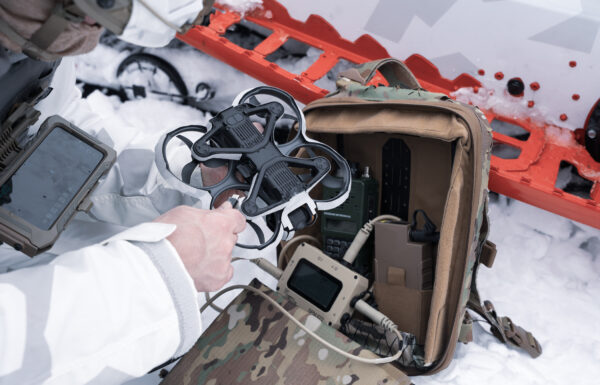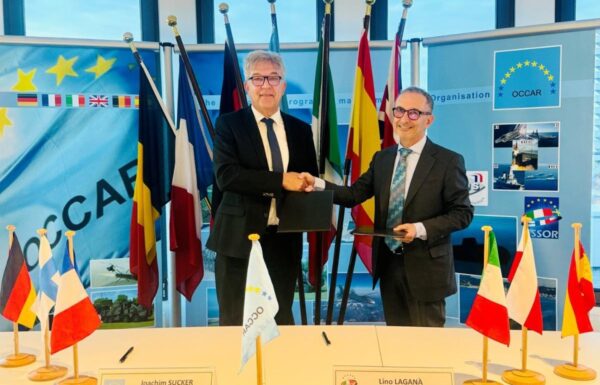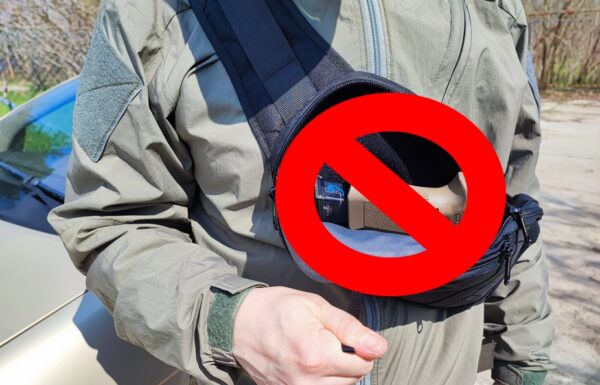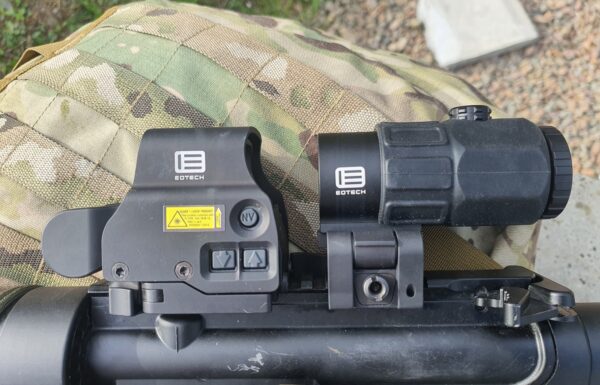The severing of subsea cables is, in itself, not an extraordinary event. On average, 150–200 such incidents occur globally each year, with fishing vessels being the primary culprits. Anchor-related damage is less common, but still accounts for dozens of cases annually.
However, the Baltic Sea has recently been experiencing what can be described as an epidemic of cable failures caused by the anchors of commercial vessels. The incident on Sunday, January 26, which disrupted communications on the fiber optic cable connecting Sweden and Latvia, marks the third such case in less than 2.5 months. Even considering that the Baltic Sea is one of the busiest maritime areas in the world and a shallow sea, making underwater cables more vulnerable to maritime activities, each new incident makes it increasingly difficult to attribute them to mere accidents or unfortunate coincidences.
 Every year, thousands of ships enter the Baltic Sea, delivering goods to local ports
Every year, thousands of ships enter the Baltic Sea, delivering goods to local ports
Last year's cable incidents
The first event in what can now be called a series of incidents occurred on November 17, 2024. On that day, the BCS East-West Interlink fiber optic cable, which connects Sweden and Lithuania, was severed. The connection, running between Gotland and the Lithuanian town of Sventoji, is owned by the major Swedish telecom operator Arelion and went offline in the morning hours. Less than 24 hours later, on November 18, another incident was reported: damage to the C-Lion1 fiber optic cable, which provides connectivity between Finland and Germany (linking Helsinki and Rostock). According to its operator, the Finnish telecommunications company Cinia, the cable was physically severed south of the Swedish island of Öland, approximately 700 km from Helsinki.
German Defense Minister Boris Pistorius, commenting on both incidents, stated that in the absence of detailed information, it must be assumed that both damages were the result of sabotage. The Chinese bulk carrier Yi Peng 3 was identified as the likely culprit behind both disruptions. On November 19, while passing through the Danish straits, the vessel was ordered to stop by the Danish authorities. It anchored in the Kattegat, but since it remained in international waters, beyond the jurisdiction of coastal states, boarding the ship was not possible without China’s consent. It was only after nearly a month, on December 19, that the ship underwent a five-hour inspection conducted by 14 Chinese officials. As observers, nine German representatives, six Swedish, three Finnish, and one Danish official were invited. However, Swedish prosecutors were not allowed to conduct any investigative actions on board. After the inspection, the ship raised anchor and departed on December 21, continuing its journey to Port Said, Egypt.
 The Polish Navy operates modern 258-class Kormoran II minehunters. These vessels are equipped with systems enabling the inspection of underwater installations on the Baltic Sea floor and the documentation of any damage.
The Polish Navy operates modern 258-class Kormoran II minehunters. These vessels are equipped with systems enabling the inspection of underwater installations on the Baltic Sea floor and the documentation of any damage.
The repair of the damaged C-Lion1 connection took less than two weeks, and by November 29, it was fully restored. However, less than a month later, on December 25, it failed again (this time, repairs lasted until January 6 of this year). This time, the damage occurred in the Gulf of Finland, and the culprit was the tanker Eagle S. While dragging its anchor for approximately 54 nautical miles (100 km), it first severed the Estlink 2 power cable and then damaged the C-Lion1 fiber optic cable. Since this incident occurred near the Finnish coast, Finnish authorities responded immediately. Once the suspect vessel was identified, it was intercepted on the morning of December 26 by the Finnish Border Guard, in cooperation with the police, and was escorted into Finnish territorial waters. The ship anchored under the escort of Finnish Border Guard patrol vessels Uisko and Turva, after which a Finnish court issued an order for its arrest.
On that day, a total of three subsea communication cables were severed between Estonia and Finland, while a fourth was damaged. The tanker Eagle S was most likely responsible for all of the destruction.
The first cables damaged in the Baltic Sea in 2025
A month after the December incident, on Sunday, January 26, at approximately 2:45 AM, another undersea cable failure occurred. This time, it affected a fiber optic cable between Sweden and Latvia, owned by the Latvia State Radio and Television Center. The damage occurred near Gotland, though detailed information is still pending, as a thorough inspection of the damaged cable has not yet been conducted. As in the Eagle S incident, authorities reacted swiftly. Latvian naval operational services identified suspect vessels, and since the event took place in Sweden’s Exclusive Economic Zone, Swedish authorities took over the investigation and began detaining the suspected ships. The first suspect vessel was the bulk carrier Michalis San, sailing under the Maltese flag. After being ordered to stop, it anchored in international waters northeast of Gotland, where it remains to this day. So far, no information has been released regarding further legal actions taken against the vessel. It is likely that negotiations are ongoing with the shipowner, possibly regarding permission for prosecutors to board the vessel, question the crew, and conduct an inspection.
The second suspect vessel was the bulk carrier Vezhen, owned by the Bulgarian company Navigation Maritime Bulgare, also sailing under the Maltese flag. Since it was in Swedish territorial waters at the time of the intervention, the situation was much simpler. The ship was detained and directed to an anchorage near Karlskrona, where it remains under the escort of the Swedish Coast Guard patrol vessel KBV 034 (Kustbevakningen). There, Swedish investigators boarded the ship to determine its possible involvement in the cable disruption. According to the available information, the ship’s crew admitted that one of its anchors was dropped, allegedly due to a mechanical failure and extremely bad weather conditions. However, they denied any intentional wrongdoing.
 The culprit behind the latest case of underwater infrastructure damage in the Baltic Sea is the Bulgarian bulk carrier Vezhen, sailing under the Maltese flag / Photo: Navigation Maritime Bulgare (https://www.navbul.com)
The culprit behind the latest case of underwater infrastructure damage in the Baltic Sea is the Bulgarian bulk carrier Vezhen, sailing under the Maltese flag / Photo: Navigation Maritime Bulgare (https://www.navbul.com)
Accident or deliberate act?
As noted at the outset, damage to underwater infrastructure occurs fairly regularly worldwide. In the Baltic Sea, one of the most frequently affected connections has been the power link between Sweden and Bornholm, which has been damaged four times over the past quarter-century: in 2004, 2010, 2013, and 2022. Similarly, in the Gulf of Finland, the Fenno-Skan 2 power cable was damaged by the anchor of a German vessel in 2012.
 Baltic ports are crucial for the distribution of goods and energy resources in this part of Europe / Photos: Jakub Link-Lenczowski, MILMAG
Baltic ports are crucial for the distribution of goods and energy resources in this part of Europe / Photos: Jakub Link-Lenczowski, MILMAG
This list should also include an incident from over a year ago, which, in light of subsequent events, has become the first suspected case of deliberate action. On October 8, 2023, the Hong Kong-registered container ship Newnew Polar Bear, sailing from Kaliningrad to St. Petersburg, dropped its anchor and dragged it along the seabed, damaging the Balticconnector gas pipeline, which connects Finland and Estonia—a scenario similar to later cases. It is also suspected to have been responsible for an earlier damage to the nearby Sweden-Estonia 1 (EE-S 1) telecommunications cable. The lost anchor was later found near the damaged pipeline. In this instance, the ship left the Baltic Sea without obstruction, and administrative actions against it were taken without independent inspections or a local judicial investigation. The Chinese authorities, having been informed of the suspicions, conducted their own inquiry. Following their investigation, on August 12, 2024, Chinese officials admitted that their vessel was responsible for the damage. However, they claimed that the anchor drop was unintentional, attributing it to a severe storm in the Baltic Sea at the time.
As seen in the past such incidents have occurred multiple times; however, their frequency was significantly lower. Of course, without a detailed investigation, it is impossible to determine whether each of the recent cases was intentional. Some—or in the most extreme scenario, all of them—could just as easily have been the result of an unfortunate coincidence, mechanical failure, or crew incompetence. This perspective was highlighted in an article published by The Washington Post on January 19, in which, citing intelligence sources, the authors stated that preliminary findings suggest the incidents were not intentional. Similar reports have appeared in other media outlets. However, prosecutors from the countries involved in the investigations emphasize that inquiries are still ongoing, and even if no evidence of deliberate action has been found so far, it is too early to draw conclusions before the investigation is complete.
Ships Responsible for Cable Damage
Until the end of last year, the situation seemed relatively clear. The culprits behind the cable damage were two vessels owned by Chinese companies—the container ship Newnew Polar Bear and the bulk carrier Yi Peng 3—as well as a third ship, the tanker Eagle S, which sails under the Cook Islands flag and belongs to the so-called Russian shadow fleet. These are old vessels either purchased by Russian oil companies or owned by third parties but operated in Russia’s interest. They are used to export petroleum products subject to European Union and U.S. sanctions. All three vessels shared a common pattern: they departed from Russian ports and they were relatively old ships: Yi Peng 3 entered service in 2001, Newnew Polar Bear in 2005, Eagle S in 2006.
The suspected ships involved in the January 26, 2025, cable damage incident do not fit this previous pattern. Both vessels, Vezhen and Michalis San, sail under the Maltese flag, meaning they are registered in an EU member state. They are not linked to embargo violations. Vezhen is a new vessel, built in 2022, and owned by a Bulgarian shipping company. Michalis San, while older (built in 2013), is not considered an outdated vessel. As a result, the only link between these two ships and the previous three is that they were traveling to or from Russian ports.
Counteraction Capabilities – A Complex Legal Situation
The deliberate damage to infrastructure is, of course, a punishable offense, both within the jurisdiction of a coastal state and in international waters (the high seas), as stated in Article 113 of the United Nations Convention on the Law of the Sea (UNCLOS). This article specifies that each state must establish legal provisions holding ships under its flag or persons under its jurisdiction accountable for cutting or damaging a high-voltage power cable, subsea pipeline, or submarine telegraph or telephone cable, whether intentionally or through culpable negligence.
In typical cases of damage to subsea infrastructure, once the culprit is identified, a legal claim is filed with the relevant court, usually requesting the arrest of the responsible vessel as a security measure. Due to the additional costs this entails for the shipowner, the ship’s insurer often issues a written guarantee covering the potential compensation claim. One of the key challenges in maritime transport law is that shipowners’ liability is limited to a specific amount under the 1976 Convention on Limitation of Liability for Maritime Claims (LLMC). This means that in some cases, the value of the damage may far exceed the potential compensation. However, this limitation applies only to unintentional damage. According to the convention: “A person liable shall not be entitled to limit his liability if it is proved that the loss resulted from his personal act or omission, committed with the intent to cause such loss, or recklessly and with knowledge that such loss would probably result” For this reason, proving intentional action is crucial in such cases. If intentional damage is established: The full financial liability for the losses applies, overriding standard liability limits. It opens the possibility of criminal proceedings against the crew members involved.
The procedure described above, however, applies only after damage has already occurred. This raises the question: is there any possibility of taking preventive action to prevent such incidents from happening in the first place? Unfortunately, international maritime law significantly restricts measures that could help prevent such events in the future. All countries that are parties to maritime agreements have agreed to uphold the principle of freedom of the high seas, which dates back to the 17th century as a customary norm. This principle was first codified in the 1958 Convention on the High Seas, which outlined four fundamental freedoms: freedom of navigation, freedom of fishing, freedom to lay submarine cables and pipelines, freedom of overflight. These freedoms were reaffirmed in the United Nations Convention on the Law of the Sea (UNCLOS), adopted at the Third UN Conference in 1982. Even within territorial waters, the principle of innocent passage applies. Any vessel has the right to navigate through any maritime area, and no country can legally prevent it from doing so. As a result, there is no legal basis for introducing preventive restrictions on vessel movement near underwater infrastructure.
An additional complication is that maritime law does not allow boarding a foreign-flagged vessel on international waters, outside national jurisdiction. The so-called right of visit specifies that a foreign vessel can be inspected only under strictly defined circumstances, specifically when there is reasonable suspicion that it is engaged in: piracy, slave trade, illegal radio broadcasting, lacking a national registry, flying a false flag—meaning that despite displaying a different flag, it is actually of the same nationality as the inspecting state. These regulations apply to inspections conducted by warships, government-operated vessels, or aircraft on official duty. As a result, if a suspect vessel remains in international waters and does not enter the territorial waters of a nearby state, the possibility of conducting criminal proceedings against it becomes significantly limited.
In reality, until an action aimed at damaging underwater infrastructure actually begins, there is no way to prevent the threat. The only option available to coastal states is to closely monitor suspicious vessels and react as quickly as possible when they detect behavior that could potentially endanger underwater infrastructure—such as the unjustified dropping of an anchor. However, this requires a constant presence in high-risk areas. For this reason, NATO countries have decided to increase their presence in the Baltic Sea as part of Baltic Sentry operation, which was announced on January 14 by NATO Secretary General Mark Rutte. Of course, this does not change the fact that such initiatives are only preventive in the sense that they increase the likelihood of catching an offender in the act or responding quickly to an incident that has already occurred.
Threatened Baltic Infrastructure
The Baltic Sea, as a small and shallow inland sea, is extensively used for underwater infrastructure, including pipelines, power cables, and communication cables. In the Baltic Proper (excluding the Danish Straits), there are 11 power cables and 29 fiber optic connections (or 38 individual segments, if counting separate sections within larger networks). Many of these connect countries on opposite sides of the Baltic Sea, meaning they run beneath some of the busiest maritime routes.
The largest concentration of connections runs along the Gulf of Finland. A dense cluster of cables, spanning the gulf and linking Estonia and Finland, is located between Tallinn and Helsinki. Within a stretch of less than 40 nautical miles, there are six fiber optic cables and two power cables (Estlink 1 and Estlink 2). An additional six fiber optic segments connect Estonia and Finland to Sweden. The second critical area is around Gotland, where three cables connect Sweden with Latvia and Lithuania, excluding domestic Swedish connections to Gotland itself. The third major cluster of subsea connections is located between southern Sweden, Bornholm, Poland, and Germany. This area contains eight fiber optic cable segments as well as a power cable between Poland and Sweden. The last region with a high density of underwater connections is the Danish Straits. However, this area is less vulnerable, as the tight control over maritime traffic in the narrow straits increases the likelihood that any irregular activity will be detected immediately.
 Maritime traffic intensity in the Baltic Sea in 2022. The most heavily traveled routes are clearly visible, including the one through the Gulf of Finland leading to Russia’s main Baltic ports. On such routes, the risk of damage to underwater infrastructure is naturally the highest / Graphic: Baltic Marine Environment Protection Commission (HELCOM) (https://maps.helcom.fi)
Maritime traffic intensity in the Baltic Sea in 2022. The most heavily traveled routes are clearly visible, including the one through the Gulf of Finland leading to Russia’s main Baltic ports. On such routes, the risk of damage to underwater infrastructure is naturally the highest / Graphic: Baltic Marine Environment Protection Commission (HELCOM) (https://maps.helcom.fi)
The Baltic Sea is one of the busiest maritime areas in the world, with high traffic levels in regions where underwater infrastructure is located. According to data from the Baltic Marine Environment Protection Commission (HELCOM), 82,766 ships entered or exited the Baltic Proper in 2020. Two-thirds of them (54,399 vessels) took the southern route between Cape Gedser and Rostock, leading to the Kiel Canal and the Little and Great Belt straits. The remaining one-third passed through the Øresund Strait, where 28,377 ships were recorded in 2020. A large portion of these vessels naturally head to German, Polish, or southern Swedish ports, but the routes leading to the Gulf of Finland, where all known cases of infrastructure damage have occurred, still see tens of thousands of ships annually.
In 2020, 28,530 ships were recorded passing between Gotland and Latvia, while traffic to and from the Gulf of Finland was even higher, reaching 34,182 vessels. This translates to an average of 78 and 93 ships per day, respectively, highlighting the immense difficulty of physically monitoring maritime traffic in areas with underwater infrastructure. Ensuring effective surveillance would require disproportionate resources relative to the threat, creating ideal conditions for various types of “accidents”—preventing them remains highly challenging, if not unrealistic.
Incidents often occur at night, in poor weather conditions, when the ability to visually detect a ship dropping its anchor is significantly hindered. The only viable option, which is already being implemented, is to detain the vessel responsible for the damage to conduct a further investigation. However, as previously mentioned, this can only be fully enforced in territorial waters. Beyond these waters, the ability to investigate a foreign vessel depends on other factors, such as its flag state or its actual owner.
Of course, effective law enforcement actions will likely deter such activities, primarily due to civil liability—meaning that shipowners would have to bear the costs of repairing the damage, as well as expenses related to potential prolonged downtime. However, holding individuals criminally accountable, which could lead to prison sentences for crew members, is significantly more challenging. So far, in cases where it has been proven that anchors were dropped, crew members have admitted to it but claimed they were forced to do so due to difficult weather conditions or technical malfunctions. Proving intentional misconduct or reckless negligence is undoubtedly a difficult task. While, as mentioned, arresting the ship and forcing the owner to cover damages can impose significant financial costs, if old, low-value ships and shell companies are used, such risks may already be factored into the plan from the outset.
As seen from the above, if such actions are intentional, preventing them is extremely difficult. It appears that the greatest role in such cases would fall to the operational activities of law enforcement agencies and intelligence services, which could identify potential threats in advance. This would allow for monitoring suspicious vessels and preventing them from carrying out acts of sabotage. In other cases, the only option remains apprehending the perpetrators and pursuing legal action, though this can hardly be considered prevention.
































